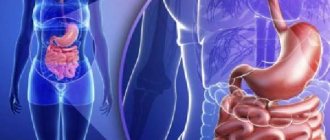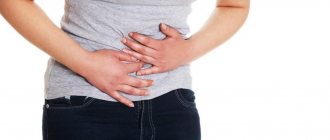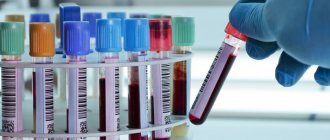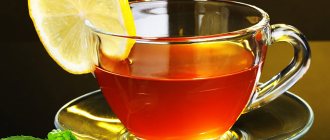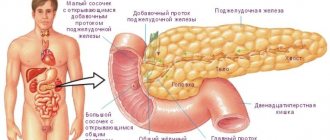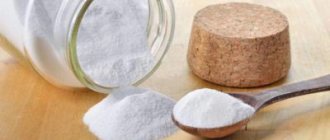Back pain due to pancreatitis occurs during exacerbations. Acute pain syndrome radiating to the back, or girdle pain, is associated with the innervation of the pancreas, with the fact that nerve fibers entwine this exocrine organ in a dense network.
The pancreas is a rather large and rather complex organ of the digestive system. Its length reaches 20-25 cm. Having its head located in the bend of the duodenum, the gland injects digestive enzymes during the transition of food from the stomach to the intestines, thereby accelerating its digestion. Metabolism, the body's receipt of necessary nutrients, and human health and performance largely depend on the pancreas.
Localization of pain during inflammation of the pancreas
Inflammatory processes in the pancreas are very painful, especially with acute pancreatitis. This pain is explained by the complex innervation of the organ, that is, the entire gland is literally entwined with nerve fibers.
Moreover, the innervation of exogenous cells (producing enzymes) occurs separately from the innervation of the islets of Langerhans ( responsible for the production of insulin) . Pain in the gland is explained by the sensitivity of the nerve endings.
The pancreas is not located in the same way in everyone, and this may explain the fact that:
- one patient feels pain in the left side,
- the other - in the peritoneum area,
- the third is under the diaphragm,
- in the fourth, pain from pancreatitis radiates to the back,
- the fifth patient experiences girdle pain.
Here we can talk about the wisdom of nature (or God). Imagine what would happen if the gland self-destructed, but the person did not feel anything. The flow of enzymes into the intestines would decrease, the islets of Langerans, which produce insulin, would be destroyed, and the person would not feel anything.
Important! Pain is a warning about problems in the body . In our case, a warning about a destructive process in the enzyme-forming gland. The pancreas is a vital organ. And its complete destruction can lead to the death of the patient.
Description
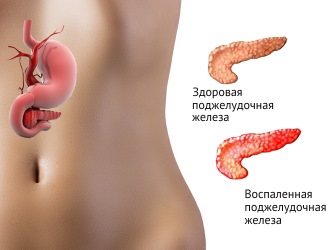
Statistics say that 2.5-11.8% of people admitted to hospitals with pathologies in the abdominal region were diagnosed with this disease.
In cases of hemorrhagic pacreonecrosis, about 70% of people die. After age 49, the number of men and women who have been diagnosed is approximately the same.
Due to blockage of the bile ducts (stones, malignant tumor, cyst), enzymes produced by the pancreas begin to destroy the organ itself.
It turns out that he “wastes” his own tissues, as a result of which the tissue partially dies (necrosis), connective tissue forms at the site of focal lesions, and the pancreas first partially and then completely ceases to perform its function.
As a result of the inflammatory process, bile, toxins, and enzymes are released into the blood, and overall severe intoxication of the body develops.
Why does my back hurt with pancreatitis?
Depending on the area of localization of the inflammatory process, irradiation of pain occurs to other parts:
- In the lower back,
- To the right side,
- In the abdominal area.

Can my back hurt with pancreatitis? Yes, maybe, although it's a little hard to imagine. The pancreas has a shape that is rounded, thickened in front (head) and thinner towards the back (tail). A small glandular organ with its head stuck to the bend of the duodenum on the back of the stomach .
The tail is located closer to the spine, so the nerve fibers of the tail form low back pain with pancreatitis. When the head of the gland is affected by the inflammatory process, the pain is localized in the abdomen, on the left side.
Differences between pancreatic pain and rheumatoid pain
As noted earlier, pancreatic damage to the pancreas is characterized by the occurrence of girdle pain, against the background of which many patients mistake it for an attack of radiculitis, kidney pathology, or simply for a stretched back muscle. But pancreatitis is a serious pathology that requires appropriate treatment. Therefore, it is very important to distinguish pancreatic attacks from rheumatoid pain.
Pancreatic pain usually occurs after each meal, especially fatty or fried, spicy or salty foods, as well as alcoholic beverages. It can also occur against the background of pathologies of the intestines, stomach, and excess weight. But rheumatoid pain occurs after heavy physical labor, during trauma, or against the background of hypothermia, but their etiology is in no way related to the digestive processes.
It is also worth noting that pancreatic pain has an acute cutting character in the hypochondrium area, with irradiation to the umbilical fossa and lumbar back.
Rheumatoid pain manifests itself in the lower abdomen; in the female body, the uterus may hurt from intense tension caused by a spasm of pain, the ovarian and adnexal zones, as well as the area where the bladder is located. Pain in the spine area often radiates to the leg or arm.
How to distinguish back pain with pancreatitis from other pathologies?
The patient cannot always assume that the digestive organs are capable of causing back pain. And therefore, when pain occurs in the back, the patient is ready to assume anything, but not inflammation of the organ of the digestive system. Instead of pancreatitis, a person is ready to assume:
- Renal colic,
- Radiculitis,
- Or that he strained his back, strained himself.
Meanwhile, pancreatitis is a dangerous disease , and incorrect self-diagnosis plus an error in treatment can cost him his life.
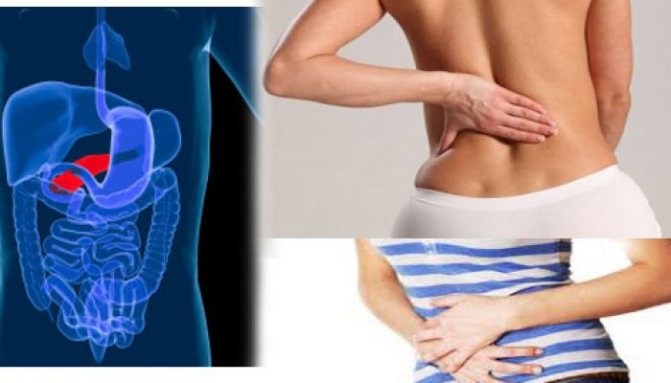
How to distinguish pancreatitis from other pathologies? When inflammation worsens, the following symptoms are observed:
- Cutting pain, often turning into girdling pain;
- The temperature rises;
- Loss of appetite;
- Nausea accompanied by vomiting may occur;
- Blood pressure drops to the point that the patient may lose consciousness;
- The face takes on a grayish color.
Radiculitis is characterized by back pain radiating to the legs , poor circulation in the legs, which can be identified by the appearance of “pins and needles”, tingling, or burning in one or both legs. Pain in the back muscles increases with movement. There may be thickening or redness of the skin in the area of sore muscles. With renal colic, temperature and blood pressure increase. The pain goes down to the bladder.
Important! An attack of pancreatitis usually occurs after a heavy feast with a lot of alcohol, fatty, spicy, salty foods (snacks) . Nutrition does not affect muscle pain and exacerbation of radiculitis. These types of pain occur after intense physical work, when lifting weights.
Symptoms
Signs of pancreatic pathology depend on the form of the disease and its nature (acute or chronic). Acute disease of the gland is characterized by the manifestation of clear symptomatic signs that require immediate medical attention. Signs of the acute form of pancreatic disease are expressed as follows:
- the appearance of acute pain in the hypochondrium on the right, involving the entire abdominal cavity,
- pain with girdling manifestations radiates with dagger-like cuts to the area of the lumbar back and to the area of the shoulder blades, decreasing when taking a sitting position with a slight bend forward,
- intense level of nausea with characteristic vomiting,
- loss of appetite,
- bloating of the entire abdominal cavity,
- paleness or yellowness of the skin,
- increased heart rate with low blood pressure.
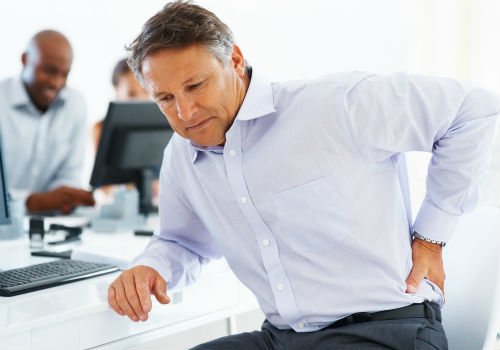
With the development of an acute form of pancreatic disease, the manifestation of pain in the back area becomes permanent. The same painful feelings also arise during exacerbation of the chronic form of this pathology, but they have a less pronounced nature of manifestation and can be mistaken for symptoms of a disease of the spinal column. The localization of back pain depends entirely on which part of the gland is affected by inflammation.
With the progression of inflammatory pathology in the area of the caudal part of the parenchymal organ, pain occurs on the left and can radiate to the lumbar region and chest. And if the head zone of the gland is affected, pain appears on the right side of the hypochondrium and can spread to the area of the right chest and to the lumbar region.
When the entire parenchymal organ is affected with the development of intense swelling, a girdle pain syndrome appears, affecting the entire cavity of the peritoneum and back.
In the event that the patient experiences, along with painful sensations in the area of the upper peritoneum, radiating to the back, a sharp weight loss. As well as a depressive state, vomiting with blood clots and yellowness of the skin and sclera of the eyes - this indicates that pancreatic pathology has entered a complicating stage, and perhaps endocrine pancreatic cancer has already formed. Treatment for this pathology is developed based on its stage of progression. Surgery is necessary for:
- resection of the head part of the gland,
- removal of certain areas of the small intestine,
- elimination of part of the bile duct, and maybe the bladder,
- to amputate the affected area of the stomach and reduce the growth of a tumor-like neoplasm.
After surgery, drug therapy is prescribed.
Girdle character
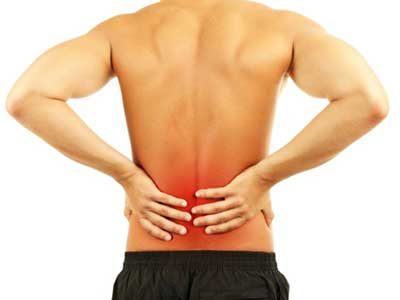
It is important to remember that when a large part of the organ is affected by the inflammatory process, the patient must be attentive to his body, to diet and restrictions on a number of foods.
If you have pancreatitis, you should give up alcohol forever. Doctors have noticed that most relapses and exacerbations of pancreatitis occur precisely after the holidays.
Important! The girdle pain during pancreatitis is unbearable, and at the first signs of exacerbation, you must consult a doctor to prescribe treatment. In case of acute pancreatitis, any food is excluded for the first 2 days. Although with such localization of pain, the patient himself will not want to eat.
Pain relief at home
If a patient experiences a burning pain symptom that can radiate to the spine, it is necessary to relieve the unpleasant symptom and anesthetize the patient’s area of manifestation of the disease. For this purpose, you can use cold at home. A heating pad with ice water or ice is applied for 15-20 minutes, after which it is removed for a while and the session is repeated in the future. A cold compress reduces the severity of pain and alleviates the condition of those suffering from pancreatitis.
At the first manifestation of a painful symptom, you should call a doctor. Before the doctor arrives, to reduce pain, in addition to cold, you can give the patient a No-shpa tablet and drink small amounts of still mineral water every 30 minutes.
It is not recommended to use painkillers before the doctor arrives, as their use may complicate further diagnosis of the disease. You should refuse food completely. After providing first aid to the patient, he is transported to the hospital for examination and further treatment.
You can relieve pain with painkillers after the examination. For this purpose, you can use drugs such as Baralgin, Citramon or Paracetamol.
What to do?
First of all, it is necessary to confirm or exclude the presence of pancreatitis. If the symptoms described above occur with back pain (nausea, low blood pressure, etc. ), if back pain alternates with girdle pain, you should under no circumstances self-medicate. You need to see a doctor. Indeed, along with the digestion of pancreatic tissue, a tumor can form on the gland. Moreover, more often it is malignant.
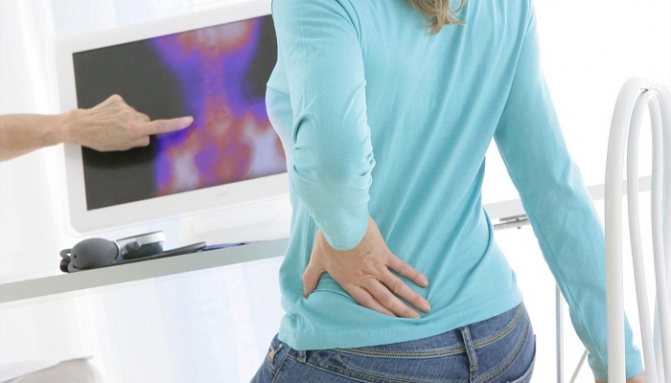
Pain during exacerbation of pancreatitis does not go away. Pain pills may provide temporary relief. And it doesn’t matter where it is localized: in the peritoneum, or back, in the right or left side. If pain occurs, hospitalization will most likely be required.
Don’t try to replace going to the doctor with anesthetics, justifying yourself as being super busy. We often put off going to the doctor for fear of learning something terrible, and at the same time we miss an opportunity for treatment.
Important ! In especially severe cases of pancreatitis, when more than 2/3 of the gland is affected by necrosis, the doctor strongly recommends anectomy. This is a last resort.
If the pancreas is removed, other organs of the digestive system will experience constant stress, and the patient will have to receive enzymes while taking medications for life. Removal of the pancreas also entails hormone replacement and antidiabetic therapy.
The diagnosis of pancreatitis requires strict self-discipline from a person. And above all, discipline in nutrition. The principle “If you want, then you can” is a step towards the grave . Doctors have developed dietary nutrition for patients with pancreatitis. A strict diet is used during exacerbations, and a somewhat relaxed diet during remissions. Following a diet and giving up alcohol can slow down the destructive process and increase the life expectancy of a person suffering from pancreatitis.
Prevention of pancreatitis
Whatever one may say, a healthy lifestyle after an attack is the right decision, thanks to which good health can be maintained for many years. It is necessary to maintain good physical shape and eat small and often . After winter, when the body especially needs vitamins, you need to eat more natural foods, vegetables, and take vitamin complexes.
Smoking and drinking alcohol damage the human body at all levels, including contributing to the development of pathological processes in the pancreas. If it is not possible to eliminate alcohol completely, then it is necessary to reduce its dose and reduce the frequency of use.
Pancreatitis can be asymptomatic, and when symptoms do appear, it will be impossible to return the pancreas to its previous full state. It is easier to prevent pathology by avoiding all sorts of excesses than to later try to save the organ with the help of medicine.
A few final tips
The recommendations will be useful to people who care about the priceless gift of health and would never want to face a terrible disease.
- The longer food is subjected to heat treatment, the less valuable substances it contains for the body.
- Dishes heated one, two or more times are harmful.
- The number of dishes on the table is 2-3. If there are more of them, then in the stomach they turn into an indigestible mass and cause digestive disorders. The pancreas also suffers.
- The brown crust that forms on fried foods is a source of carcinogens. It is not absorbed by the body and is harmful in all respects.
- Drinks are not consumed during meals. You can drink 1 hour before sitting at the dinner table, and after eating, 1 hour later.
- Instead of coffee and black tea, it is better to give preference to decoctions of healthy and aromatic herbs.

